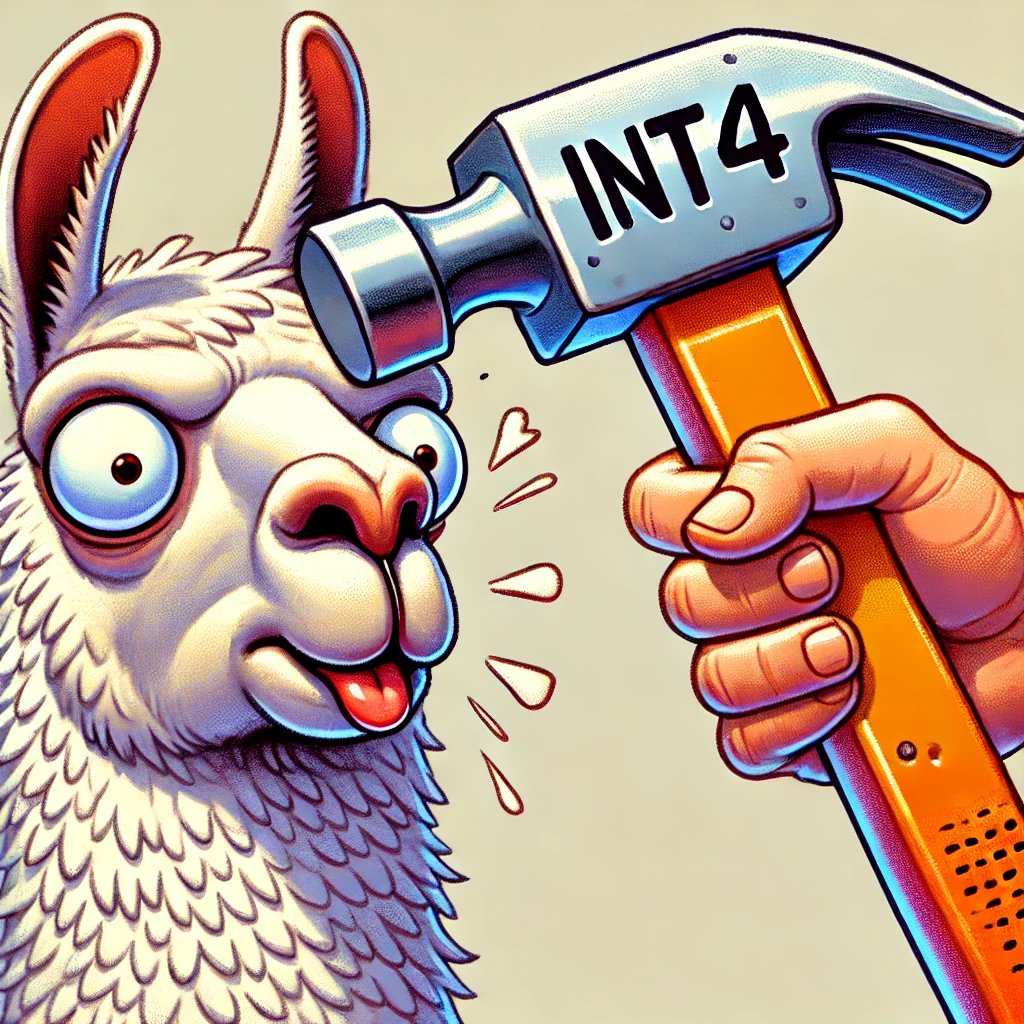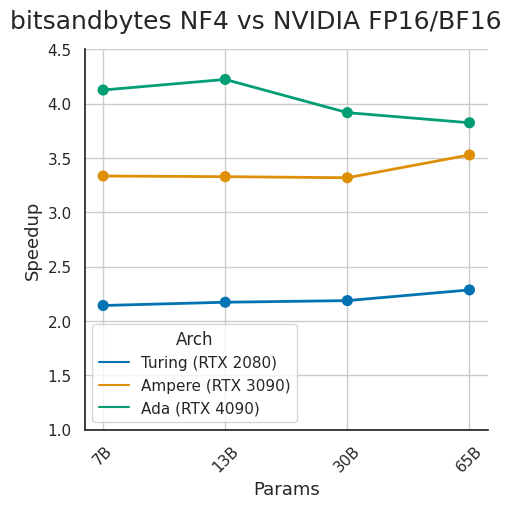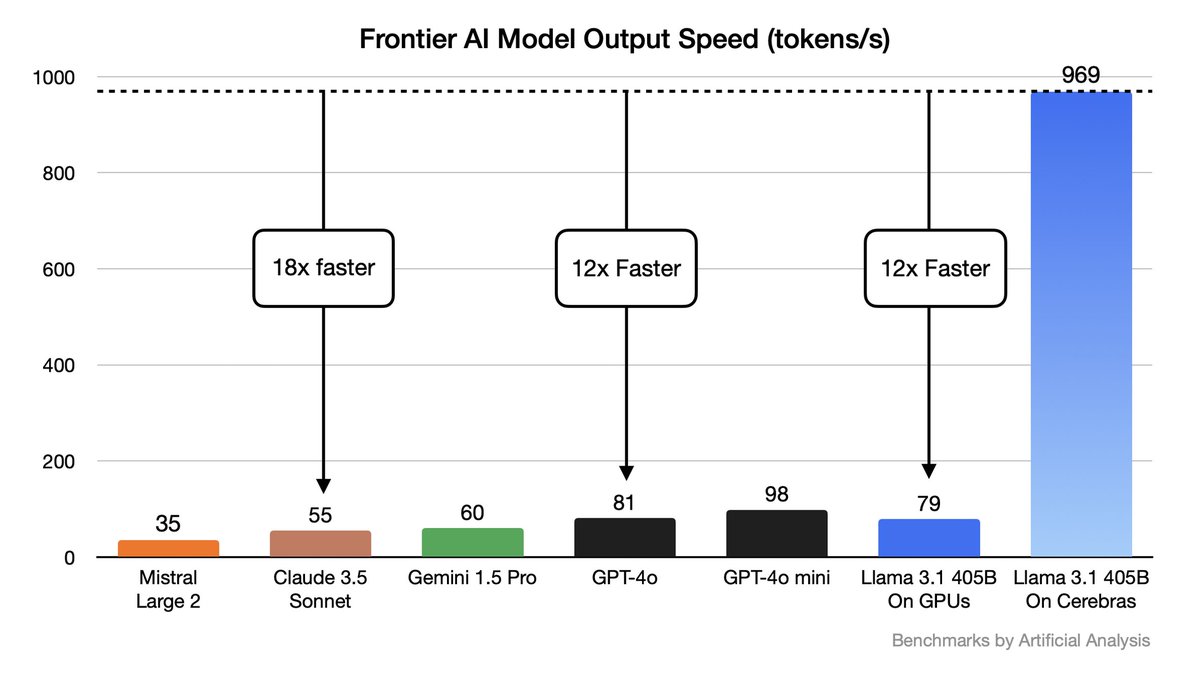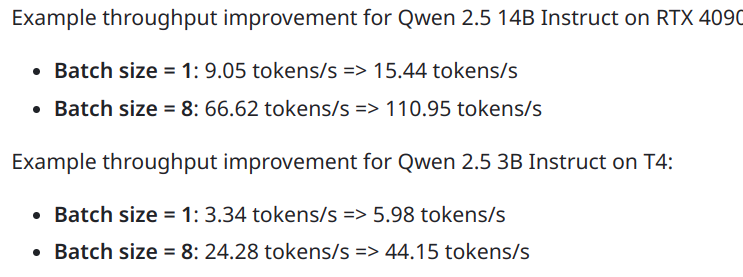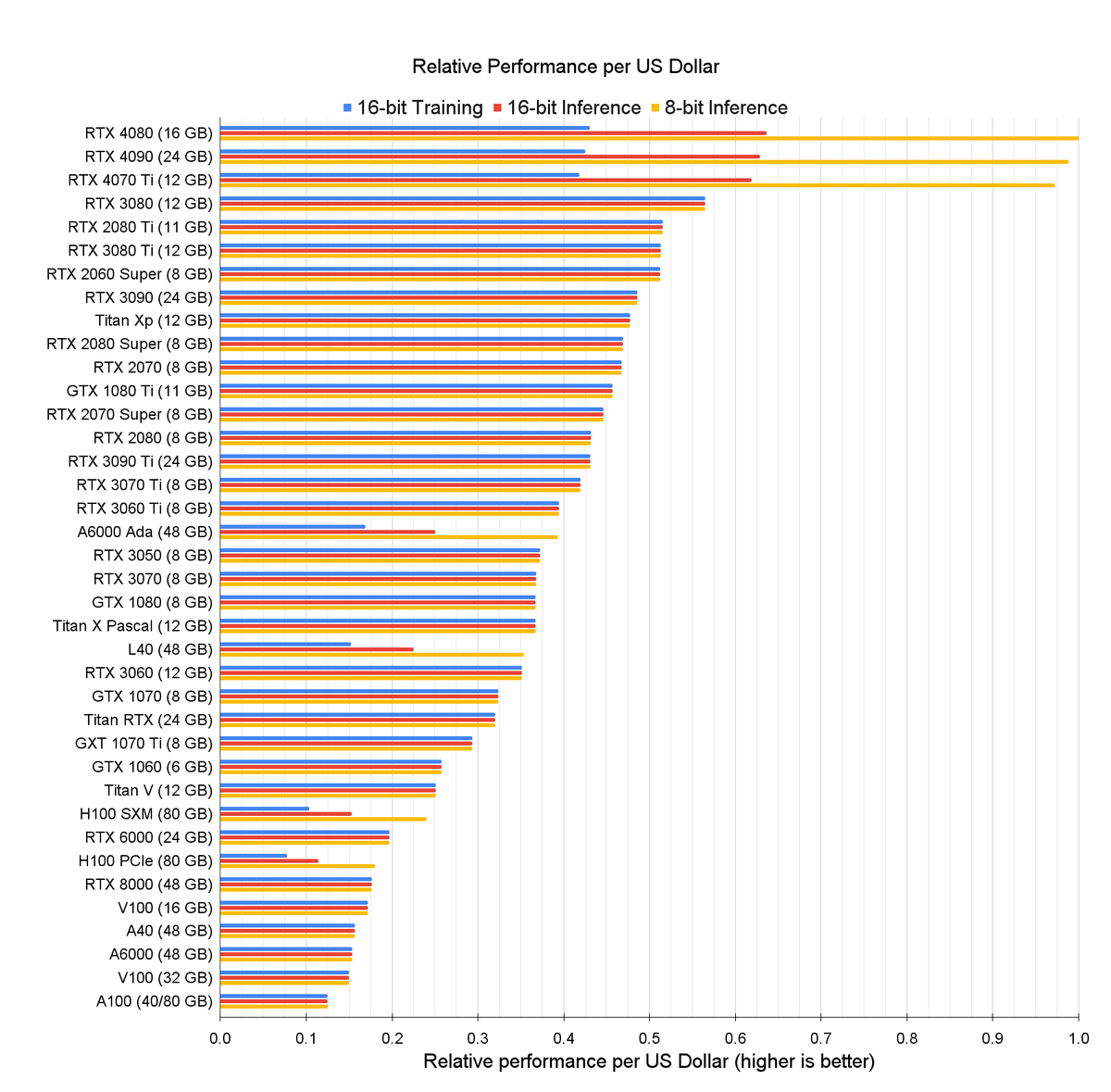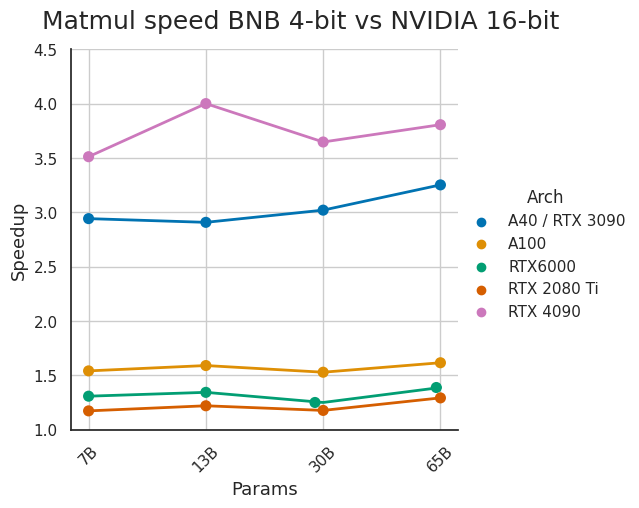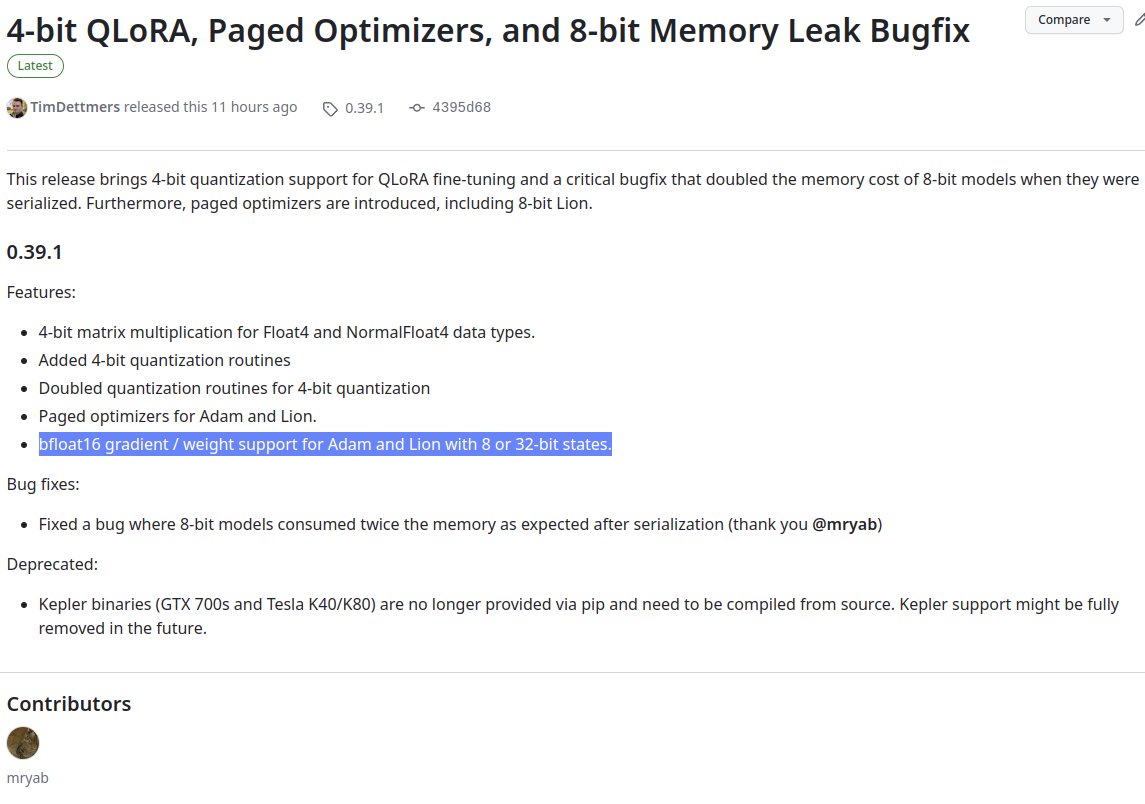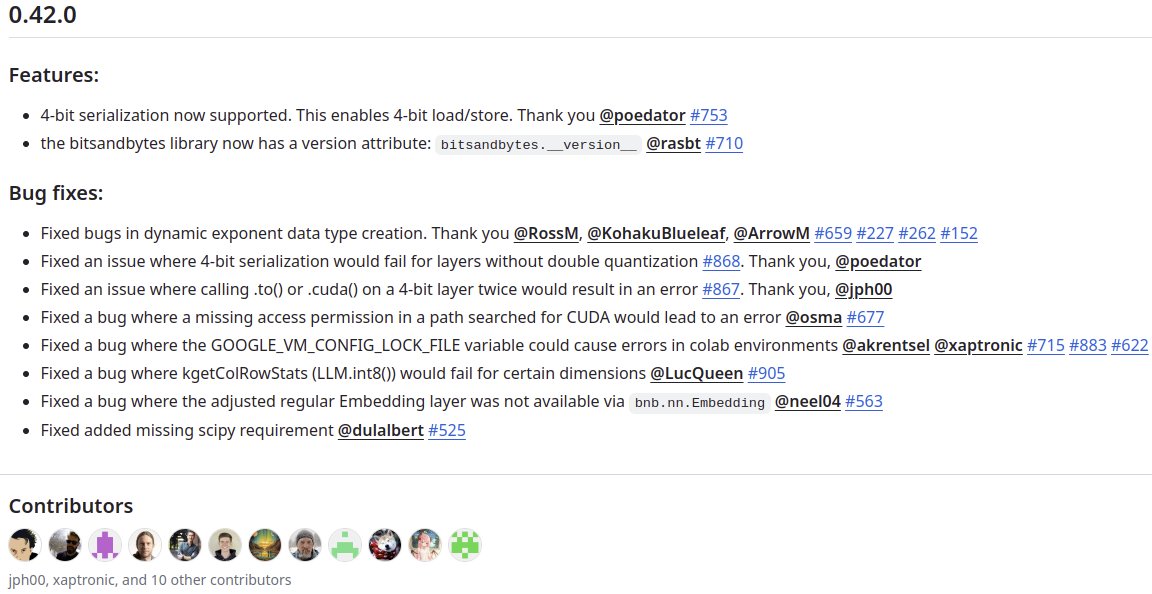
Tim Dettmers
@Tim_Dettmers
Followers
35K
Following
4K
Media
132
Statuses
3K
Creator of bitsandbytes.Research Scientist @allen_ai and incoming professor @CarnegieMellon. I blog about deep learning and PhD life at https://t.co/Y78KDJJFE7.
Seattle, WA
Joined October 2012
After 7 months on the job market, I am happy to announce:.- I joined @allen_ai.- Professor at @CarnegieMellon from Fall 2025.- New bitsandbytes maintainer @Titus_vK. My main focus will be to strengthen open-source for real-world problems and bring the best AI to laptops 🧵.
155
86
2K
This is the most important paper in a long time . It shows with strong evidence we are reaching the limits of quantization. The paper says this: the more tokens you train on, the more precision you need. This has broad implications for the entire field and the future of GPUs🧵
[1/7] New paper alert! Heard about the BitNet hype or that Llama-3 is harder to quantize? Our new work studies both! We formulate scaling laws for precision, across both pre and post-training TLDR;. - Models become harder to post-train quantize as they
66
491
3K
@karpathy Super excited to push this even further:.- Next week: bitsandbytes 4-bit closed beta that allows you to finetune 30B/65B LLaMA models on a single 24/48 GB GPU (no degradation vs full fine-tuning in 16-bit).- Two weeks: Full release of code, paper, and a collection of 65B models.
39
191
1K
Reading the report, this is such clean engineering under resource constraints. The DeepSeek team directly engineered solutions to known problems under hardware constraints. All of this looks so elegant -- no fancy "academic" solutions, just pure, solid engineering. Respect 👏.
🚀 Introducing DeepSeek-V3!. Biggest leap forward yet:.⚡ 60 tokens/second (3x faster than V2!).💪 Enhanced capabilities.🛠 API compatibility intact.🌍 Fully open-source models & papers. 🐋 1/n
19
107
974
We release the public beta for bnb-int8🟪 for all @huggingface 🤗models, which allows for Int8 inference without performance degradation up to scales of 176B params 📈. You can run OPT-175B/BLOOM-176B easily on a single machine 🖥️. You can try it here: 1/n
27
222
911
Just to clarify this benchmark. This is an apple to oranges comparison. - Cerebras is fast for batch size 1 but slow for batch size n. - GPUs are slow for batch size 1 but fast for batch size n. I get >800 tok/s on 8x H100 for a 405B model for batch size=n. Cerebras' system.
Llama 3.1 405B is now running on Cerebras!.– 969 tokens/s, frontier AI now runs at instant speed.– 12x faster than GPT-4o, 18x Claude, 12x fastest GPU cloud.– 128K context length, 16-bit weights.– Industry’s fastest time-to-first token @ 240ms
28
84
829
Just a reminder that the default hyperparameters of LoRA are performing poorly. You need to attach LoRA modules to all layers for it to perform as well as full fine-tuning. Once you do that, we find there is no difference between LoRA and fine-tuning.
LoRA is not a drop-in replacement for Full Finetuning. Even though it reduces the compute requirements by 3x it comes with certain limitations. The data preparation needed for both is also different. 🔑. - LoRA requires much more data to converge compared to full FT. This can be
17
110
661
This is actually a great argument for using MoEs. When I think about MoEs, I think about the cerebellum and its relationship to the rest of the brains. Here is my intuition: The human brain has ~20% "recurrent" neurons (cerebrum) and ~80% MoE-style forward neurons (cerebellum).
MoEs increase parameter count but not FLOPs. Do they offer "free lunch", improving performance without paying in compute?. Our answer: for memorization, MoEs give performance gains "for free", but have limited benefit for reasoning!. Arxiv: 🦜🦜🦜
20
77
521
Open-source models beating closed models will become more and more common. Scaling has diminishing returns. The best solution will not have the largest scale but best approach or data. Especially with test-time compute, you do not need the best model to have the best solution.
Meet Molmo: a family of open, state-of-the-art multimodal AI models. Our best model outperforms proprietary systems, using 1000x less data. Molmo doesn't just understand multimodal data—it acts on it, enabling rich interactions in both the physical and virtual worlds. Try it
11
80
504
The new bitsandbytes is here:. ~15% faster 4-bit.~70% faster 8-bit inference.8-bit support for H100s. Great engineering from @mattkdouglas. bitsandbytes now receives about 100,000 installations daily. A little history on 8-bit implementations in bnb 🧵
7
70
487
Our work on loss spikes and stable 8-bit CLIP training is the largest Int8 training to date (1B). We introduce the SwitchBack layers and StableAdamW to ensure stability at these scales. Work with the awesome @Mitchnw. Paper: Colab:
4
97
427
Just as a warning: I tried all of these, and all of these worked . at the small scale. When scaled up, none of these worked for me (except padding embeddings -- but what you should really do is optimize the layout to align with memory tiles). That being said, I do not want to.
New NanoGPT training speed record: 3.28 Fineweb validation loss in 15.2 minutes. Previous record: 22.3 minutes.Changelog:.- pad embedding to nearest 64.- switch from GELU to ReLU².- zero-init projection layers.- QKNorm. All four changes driven by @Grad62304977.1/8
21
32
414
Out of nowhere: far better translator than Google. Begs the question: Can Google be overtaken in search too? #dlearn
17
220
368
Looking at the comments, some people missed the Guanaco-33B demo because it was added later: Big thanks to @huggingface for sponsoring this demo!. The second thing I noticed was that people were a bit lost on how to use the adapters. So here a tutorial🧵.
QLoRA: 4-bit finetuning of LLMs is here! With it comes Guanaco, a chatbot on a single GPU, achieving 99% ChatGPT performance on the Vicuna benchmark:. Paper: Code+Demo: Samples: Colab:
11
73
383
This is the main driving assumption of my research and it is still holding up after 10 years: Humans are not special, scale is. The other main fact (sparsity): Humans are not special, but primates are. Only primates and birds have neurons not proportional to their body size.
People claimed the human brain was special relative to other primates in the size of the temporal lobes, involved in functions such as language. Newer data once again shows that no, the human brain is just a scaled up primate brain
14
42
375
@karpathy I have also seen this before. I think it's the psychology of material coming all at once that can be overwhelming for newcomers. If one builds up things bit-by-bit there not this overwhelming feeling of "this is too much; I am not good enough to learn this".
6
6
356
This is excellent work — a big step forward in quantization! It enables full 4-bit matmuls, which can speed up large batch inference by a lot. Anyone deploying LLMs at scale will soon use this or similar techniques.
[1/7] Happy to release 🥕QuaRot, a post-training quantization scheme that enables 4-bit inference of LLMs by removing the outlier features. With @akmohtashami_a @max_croci @DAlistarh @thoefler @jameshensman and others. Paper: Code:
5
56
335
I am very excited to be selected as one of the #AI2050 Early Career Fellows! .My research is shifting, and my main focus will be on building open-source AI agents that use dynamic computation to enable powerful AI systems on consumer devices. I am hiring PhD students at CMU!.
We're thrilled to welcome the 2024 cohort of AI2050 Senior and Early Career Fellows –– 25 visionary researchers tackling AI's toughest challenges to ensure it serves humanity for the better. Learn more about this year’s cohort of fellows:.
34
58
320
Continued pretraining with QLoRA is just around the corner! A second pretraining of models like Falcon-40B in 4-bit would be super-efficient.
Parameter-efficient fine-tuning revolutionized the accessibility of LLM fine-tuning, but can they also revolutionize pre-training? We present ReLoRA — the first PEFT method that can be used for training from scratch! 🔥🔥.
9
41
302
@typedfemale Yes, it is a big problem. I really want to create a class for machine learning systems that also has an emphasis on CUDA programming for deep learning. So many people were interested in this. I will probably get on this once I finish the faculty application process.
7
7
298
My new work with @LukeZettlemoyer on accelerated training of sparse networks from random weights to dense performance levels — no retraining required!.Paper: Blog post: Code:
2
81
271
We now have Int8 backprop support for all GPUs for bitsandbytes! Now available via 'pip install bitsandbytes'. This was a contribution from @sasha_borzunov. We will release Int8 fine-tuning for all @huggingface models soon — stay tuned!.
5
40
267
@HamelHusain If you wait for another two weeks, we have something nice for you ;) With the right methods you can fine-tune a 30B model on that GPU. A 30B policy with 30B value function also works for RLHF.
16
14
246
@willie_agnew Literally curing cancer. I talked to a biologist who used my methods in conjunction with open models to develop new methods for drug discovery. They developed drugs for previously incurable pediatric cancers. These are real wet lab in vitro results — it just works.
14
12
241
An excellent end-to-end guide for finetuning. It has all the details from data prep to deployment. If you want to finetune, this is a great resource to get started.
What's the best way to fine-tune open LLMs in 2024? Look no further! 👀 I am excited to share “How to Fine-Tune LLMs in 2024 with Hugging Face” using the latest research techniques, including Flash Attention, Q-LoRA, @OpenAI dataset formats (messages), ChatML, Packing, all built.
3
45
241
This is really great work! For layer 5 pyramidal neurons: A dendritic branch = MLP with 1 layer, 4 units; the entire neuron = MLP with 7 layers, 128 units each. One bio neuron > most MNIST models. We have about 85bn neurons in total and >1tn dendrites — that is a lot of compute!.
A story of a Cortical Neuron as a Deep Artificial Neural Net:. 1) Neurons in the brain are bombarded with massive synaptic input distributed across a large tree like structure - its dendritic tree. During this bombardment, the tree goes wild. preprint:
6
63
233
FP8 training works well and has large benefits. It has steep networking requirements to achieve good utilization but there are solutions to that too (we will release one in the next days). It's a big shift and everyone with RTX 40s / H100 GPUs should look into FP8 training.
Its crazy that, at 60% Model FLOPS (FP8) Utilization on H100, original GPT3 configuration can be trained in 3 days on 1024 H100s and PaLM on 12 days on 2048 H100s. That's roughly 50x lesser gpu hours for GPT3 paper 3 years back, and 9x lesser for palm released 9 months back.
6
20
224
If you are merging adapters with QLoRA 4-bit weights, please use the gist below for merging. This will increase the performance of the QLoRA model. I think I have seen a PR on PEFT, so this will soon come to PEFT by default, but for now, its better to merge it in this way.
Just put together a gist for merging QLoRA with the quantized model weights as mentioned by @Tim_Dettmers @Teknium1 @erhartford Since I know you guys were looking into it. Should be able to quantize the whole thing after this without issue.
1
24
220
I forgot how much better Guanaco-65B is compared to 33B. You can try here via Petals (globally distributed inference): With Petals, you can also run a 65B model in a colab or locally on a small GPU at ~5 tokens/sec (see below).
@fernavid @Tim_Dettmers We've updated one just today: this notebook shows you:.- how to run a 65B model from Colab,.- how to plug in adapters between its layers, .- and how to write custom generation methods (you can't do this with an API).
1
36
217
This model flew under the radar. It has the highest MMLU score of any open-source model. I have not tried it myself but I am curious how it compares to other models when evaluated across a broad range of tasks. Can somebody give it a try?.
Our team at @01AI_Yi is very proud to introduce the release of Yi-34B model now on top of @huggingface pretrained LLM leaderboard! Also a Yi-6B available. Welcome to give a try and build fantastic projects!.
12
12
194
Guanaco-33B holds up well. Controlled for the memory footprint, its the best model. Since it was trained in 4-bit, it uses as much memory as a regular 7B model. The memory needed during fine-tuning is 17x less, so a 7B model is much more expensive to fine-tune than Guanaco 33B.
We are excited to announce the first major release of the Chatbot Arena conversation dataset!. - 33K conversations with pairwise human preferences.- 20 SOTA models such as GPT-4, Claude, and LLaMA-based Vicuna.- From 13K unique IPs in the wild.- An additional 3K expert-level
4
24
183
One thing that I care about in bitsandbytes is to provide _broad_ accessibility to LLMs. GPUs up to 9 years old are supported by 4-bit inference in bitsandbytes and you will see good speedups.
@Tim_Dettmers Wow! This just gave Volta cards a new lease on life: Testing with 4xV100S and a 30B~ model. Got a 3.2x speedup! 7-8 tokens per second is very usable for an interactive chat experience.
4
16
180
Claude even felt better today than usual. I was surprised that it could do things it could not do before. It felt much more nuanced. I tried Claude before reading this, so I thought, "Maybe I just prompted it right" 😂. Now, I think this is just the new model.
I'm excited to share what we've been working on lately at Anthropic. - Computer use API.- New Claude 3.5 Sonnet.- Claude 3.5 Haiku. Let's walk through everything:
5
9
179
Below highlights some problems with QLoRA (I should not have been so smirky😅), and I wanted to highlight some issues but also resolve some others. We integrated our QLoRA codebase with 5 other open-source codebases before release, and it seems we created some issues on the way🧵.
1
26
179
A really nice blog post by @agrinh about recent progress in GANs and variational autoencoders. Gives a short overview about GANs and their problems and then dives deep into the newest methods from ICML2018.
0
47
180
@CarnegieMellon won me over. It is an amazing place. Highly collaborative, very collegial, close-knit, with excellent students and great support. Looking forward to my time there!. I will take 2-3 PhD students for Fall 2025. Please apply to the CMU PhD program to work with me.
8
9
179
Catch my talk on k-bit Inference Scaling Laws at the @ESFoMo workshop, ballroom A (fourth floor), 10:50am. Slides:
2
32
177
This is pretty significant for custom CUDA code. Even with years of CUDA experience, it is very difficult to write peak performance matrix multiplication code. CUTLASS is great, but it seems Triton has better performance, is more customizable, and you can write code in Python.
We’re releasing Triton 1.0, an open-source Python-like programming language for writing efficient GPU code. OpenAI researchers with no GPU programming experience have used Triton to produce kernels that are 2x faster than their PyTorch equivalents.
4
19
171
This is a big deal. You no longer need labels to get good robot performance.
Excited to introduce 𝐋𝐀𝐏𝐀: the first unsupervised pretraining method for Vision-Language-Action models. Outperforms SOTA models trained with ground-truth actions.30x more efficient than conventional VLA pretraining. 📝: 🧵 1/9
2
15
167
@srush_nlp @4evaBehindSOTA Regular transformers are notoriously difficult to sparsify, this is even true for the FFN layers in MoE transformers. But MoE layers are very different. You can also quantize them to 1 bit without any problem, but sparsification gives you better memory benefits than 1-bit quant.
5
22
166
Now you can use bitsandbytes on AMD GPUs and Intel hardware. This is a big milestone and was a huge undertaking. @Titus_vK did an amazing job here. Eager to hear feedback! Let us know how it works for you.
🚀 Big news! After months of hard work and incredible community contributions, we're thrilled to announce the 𝗯𝗶𝘁𝘀𝗮𝗻𝗱𝗯𝘆𝘁𝗲𝘀 𝗺𝘂𝗹𝘁𝗶-𝗯𝗮𝗰𝗸𝗲𝗻𝗱 𝙖𝙡𝙥𝙝𝙖 𝗿𝗲𝗹𝗲𝗮𝘀𝗲! 💥. Now supporting:.- 🔥 𝗔𝗠𝗗 𝗚𝗣𝗨𝘀 (ROCm).- ⚡ 𝗜𝗻𝘁𝗲𝗹 𝗖𝗣𝗨𝘀 & 𝗚𝗣𝗨𝘀. (1/2).
1
19
163
Training in low-precision looks good . until it doesn't. People should be more of the following work, that basically says that low-precision will not work at scale:.
wrote a paper: it lets you *train* in 1.58b! could use 97% less energy, 90% less weight memory. leads to a new model format which can store a 175B model in ~20mb. also, no backprop!
7
11
164




